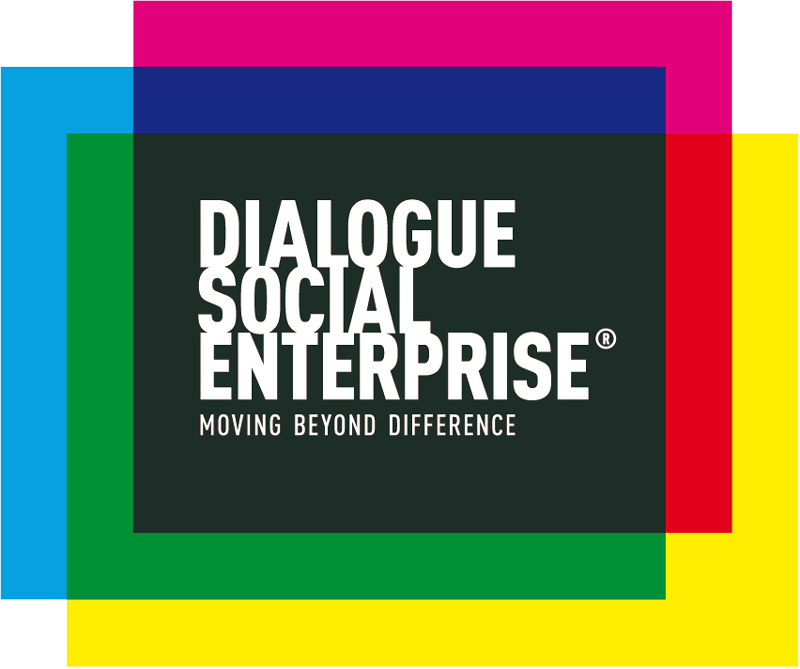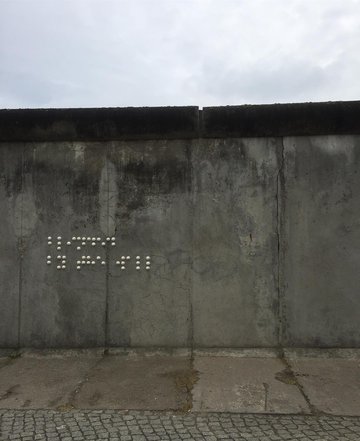After a 2020 full of screen to screen interactions, I got deeply interested in this artist analog idea, so I arranged an interview with him.
The Blind is a disruptive artist, who performs braille graffiti. He doesn’t reveal that much about himself. We know he is 37 years and from west France. But as a good artist he likes keeping some mysticism around his character.
Below the interview with The Blind. The content has been summarized for purpose of concision.
Pepe: How did you become a graffiti performer?
The Blind: I have performed graffiti for more than 20 years. I was even kicked out from my arts school because of that. Then I continued performing with some graffiti collectives where I had the chance to lead workshops for very diverse persons: homeless, addicts, people with disabilities or with very difficult backgrounds.
Pepe: Why did you choose braille as your technique if you are not visually impaired?
The Blind: I am not visually impaired. I only wear glasses. But I am dyslexic. I encountered many problems as a consequence of dyslexia especially at school where I was not able to express myself properly.
There are some episodes in my life which have impacted me and brought me to this project. Once when I was a kid during a school trip, I visited a museum. I was very happy to be outside school doing something totally different. However, I was kicked out from the museum since they got me touching some pieces. It was forbidden. But I wanted to feel the touch sense too.
Then, many years ago, as we finished a graffiti session, a very big great one, some friends said that graffiti was that big, so everyone was able to see it. I kept thinking on that. I realized blind people would not be able to see it. Therefore, I spent some time thinking how to provide access to blind people to graffiti. Braille is not a visual language, so people find it hard to understand. Same with graffiti. Often people cannot get the idea behind if they are not accustomed to it. Therefore I decided to try braille graffiti.
Pepe: How do you plan a braille graffiti?
The Blind: Sometimes I choose a symbolic place and then I find the right sentence. E.G. once I first chose the justice hall of a French city and after I thought about the sentence which approximate translation would be “If we don't get found out, we don't get caught”. But sometimes it is the opposite. I create a good sentence and then I have to look for the right place. Sentences and places have to match always and they all have a special feeling attached to it
Pepe: What kind of comments do you get due to your graffiti?
The Blind: Blind people love it. They are surprised that a sighted person is interested in braille. But they feel appreciated. They enjoy discovering the braille message in the graffiti.
On the other hand, some sighted people find it useless and ridiculous. They tell me there is no purpose if blind people will not touch it and sighted people cannot read it. But I don’t care at all. I just continue.
Pepe: What is the idea behind your work?
The Blind: I create disruptive quotes. I play with words related with dark, sight, light, senses, and I try to create messages which make you think. I involve blind people in graffiti. I want to open access for them to this art. Also to promote the encounter between sighted and blind. If a sighted cannot read braille, why not getting help from a blind? And these encounters happen especially when I set up braille graffiti exhibitions usually once or twice a year. It is cool because there are good exchanges and the sighted can put themselves in the shoes of the blind.
Pepe: What are your future plans?
The Blind: I want to continue braille graffiti. It is not easy since funding is needed. But I have been doing this for 20 years. Currently I am writing a book, “20 years of braille graffiti in the world.” I hope to find the needed funding to publish soon.
I have some more disruptive ideas in mind. I want to build a braille climbing wall. Imagine a regular climbing wall where the holds are braille dots. The rock holds would make up a good message about disability awareness. The idea is that by climbing this braille awareness message you are overcoming your fear to heights at the same time.
Meeting The Blind was a nice personal kick off to the new year. It was amazing finding a sighted person who uses braille as his communication tool. It is uplifting to get in touch with someone who is promoting encounters between blind and sighted persons but through a different channel than the dark.
By the way, The Blind has visited Dialogue in the Dark. He is an enthusiastic of DiD and hopes to find a way to collaborate in the future. You can follow The Blind here.


